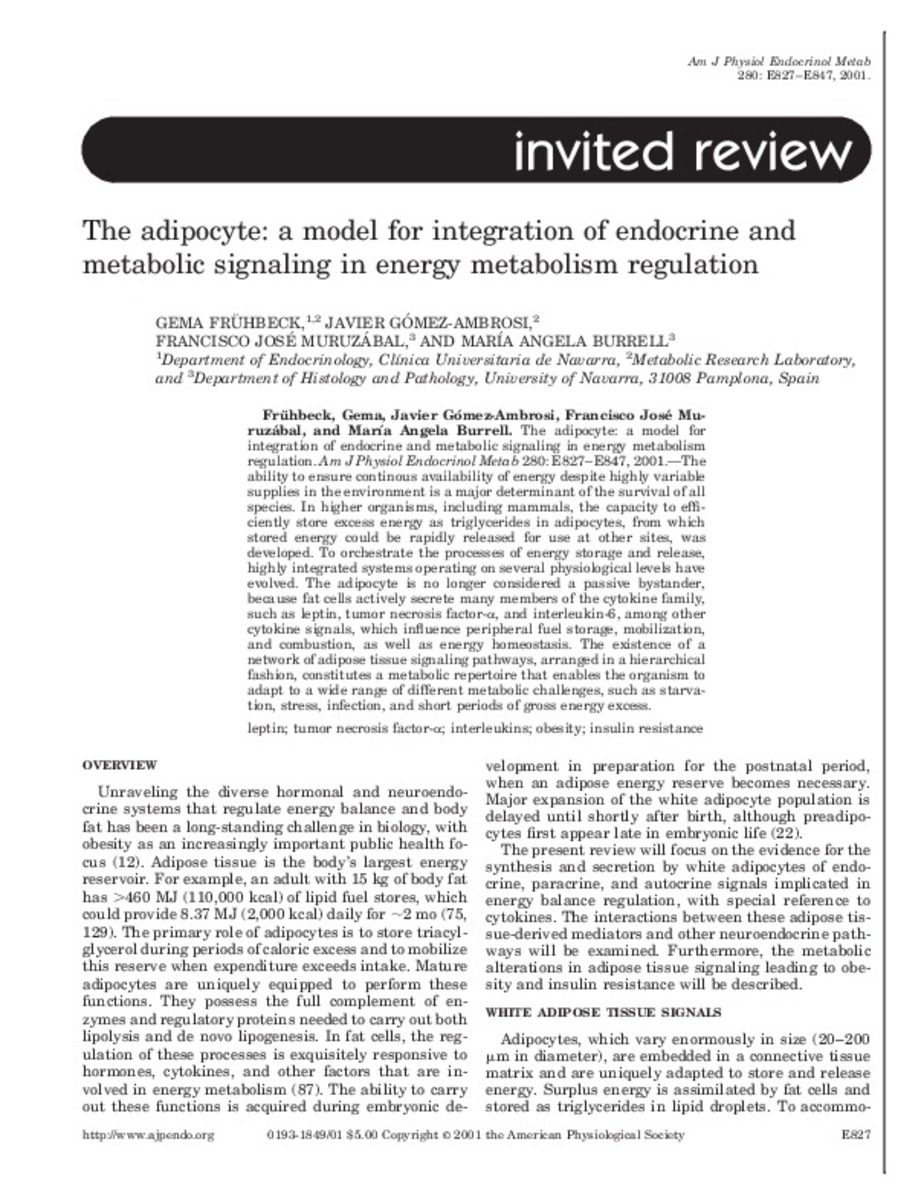The adipocyte: a model for integration of endocrine and metabolic signaling in energy metabolism regulation
Keywords:
Endocrine Glands/physiology
Energy Metabolism/physiology
Insulin Resistance/physiology
Publisher:
American Physiological Society
Citation:
Fruhbeck G, Gomez-Ambrosi J, Muruzabal FJ, Burrell MA. The adipocyte: a model for integration of endocrine and metabolic signaling in energy metabolism regulation. Am J Physiol Endocrinol Metab 2001 Jun;280(6):E827-47.
Statistics and impact
0 citas en

0 citas en

Items in Dadun are protected by copyright, with all rights reserved, unless otherwise indicated.







